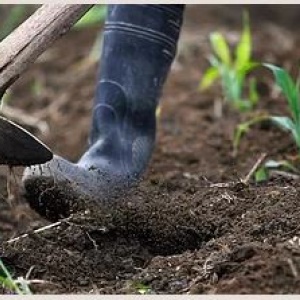
What is the latest science on soil's ability to pull carbon pollution out of the atmosphere? Breakthrough Strategies hosted a webinar on April 24 on the Technical Potential of Soil Carbon Sequestration. It featured three of the world’s leading experts on strategies for drawing carbon pollution out of the atmosphere and storing it in soils: Keith Paustian, Jean-François Soussana, and Eric Toensmeier.
Some of the highlights:
- All three presenters showcased scientific data and studies that demonstrate it is possible to remove significant amounts of CO2 from the atmosphere and store it as organic carbon in soil. Much of the potential to increase carbon storage in soil is due to the large historic losses of soil carbon due to land use change, deforestation, tilling and other land disturbances.
- The range of technical potentials that have previously been estimated for agricultural lands (cropland and grassland) have been in the range of 3 to 8 gigatons or petagrams of CO2 annually, but for a limited duration. To put this in context, one gigaton or one Pg is equivalent to one billion tonnes. In order to stay below the globally agreed upon limit of 2 degrees C of average global warming and strive to stay below the more ambitious target of 1.5 degrees C, we must as a global community both reduce emissions from fossil fuels and other greenhouse gas sources and remove carbon dioxide from the atmosphere, through forestry, agriculture, land restoration, and possibly various industrial methods. By 2030, a gap of 12 billion tons CO2e will prevent the world from reaching the targeted +2℃ maximum global warming threshold. Soils have a critical role to play in closing this gap.
- Carbon removal through sequestration in soils has multiple co-benefits including improving soil health, thereby improving resilience and adaptation to climate change and strengthening food security.
- Carbon sequestration in soils is not inherently permanent; in other words if the practices that led to the increase in soil carbon are not maintained, then the previously stored carbon can be lost again as CO2. Also, increases following a management improvement are for limited duration, typically on the order of 20-30 years, as the soil approaches a new equilibrium level. New work on biochar amendments to soil, deeper-rooted crops, perennial crops and compost applications may add to the possibility of longer term sequestration. But in general, to keep the increase of soil C in the ground, the improved management practices that gave the increases must be maintained over time.
- There are limits on the total amount of sequestration that might be achieved through agricultural soils. Soils can reach a saturation point. Further, adequate N and P supplies are needed to form the stabilized soil organic matter that contains the bulk of soil carbon. We do not yet have adequate data on this but it is important to note this emerging analysis.
- The potential for agroforestry for small land holders in particular holds more promise than is currently reflected in some of the Intergovernmental Panel on Climate Change (IPCC) estimates for soil carbon sequestration.
- The 4 per 1000 initiative is attracting strong global support. The 4 per 1000 target of 3.4 GtC/ yr in soil carbon sequestration is the sum of agricultural soils (1.4 Gt C/yr), desertified/salinized soils (0.9 GtC/yr), and forest soils (1.1 GtC/yr).
- The technical potential for soil C sequestration is large enough to be worth pursuing aggressively. We must now focus on developing the tools and infrastructure to help promote actual implementation of soil C sequestering practices and providing the incentives to farmers and ranchers to increase and maintain their soil organic carbon stocks.
For the webinar audio recordings power-point presentations, participant questions and a one-page summary are now available here.







Post a new comment »